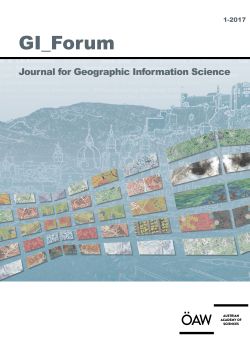
GI_Forum 2017, Volume 5, Issue 1, pp. 36-43, 2017/06/30
Journal for Geographic Information Science

Spatial correlation between variables may exist if the observed data exhibits spatial variation in a manner that is described by Tobler's first law of geography. Partial correlation is useful when considering multivariate data as it can highlight the effects of certain control variables on the correlation between any two other variables. Techniques for estimating spatial correlation have been developed based on a geographically weighted scheme. However, a partial correlation technique for spatial data has not yet been considered. Hence, we describe a technique for obtaining geographically weighted partial correlation coefficients between three variables. This approach is then applied, as an example, to global climate data in order to explore the relationship between terrestrial vegetation (by NDVI proxy), land surface temperature, and precipitation in the year 2014. Spatial variations of those variables are observed and the geographically weighted correlation and partial correlation coefficients (along with associated levels of statistical significance) are compared.
Keywords: partial correlation, spatial statistics, geographically weighted approach